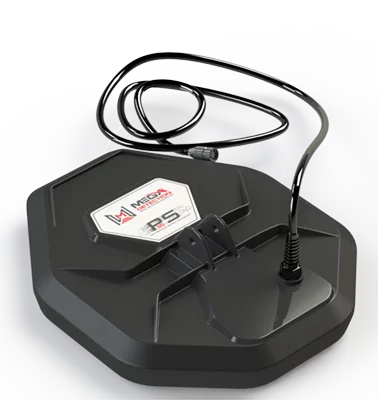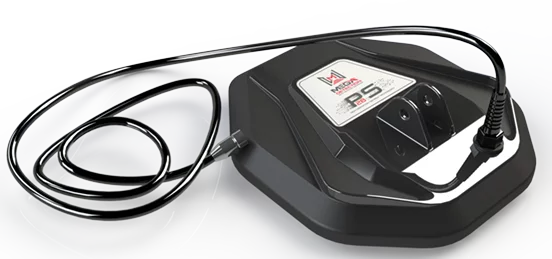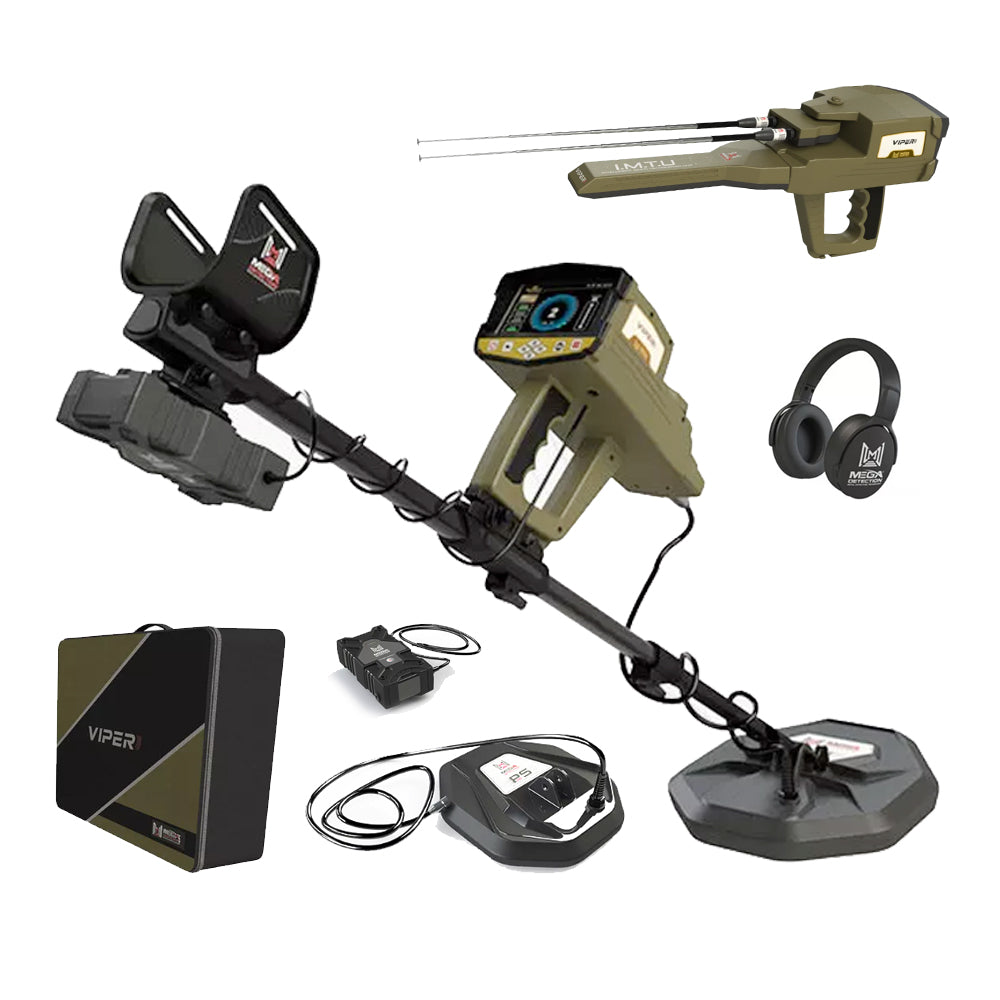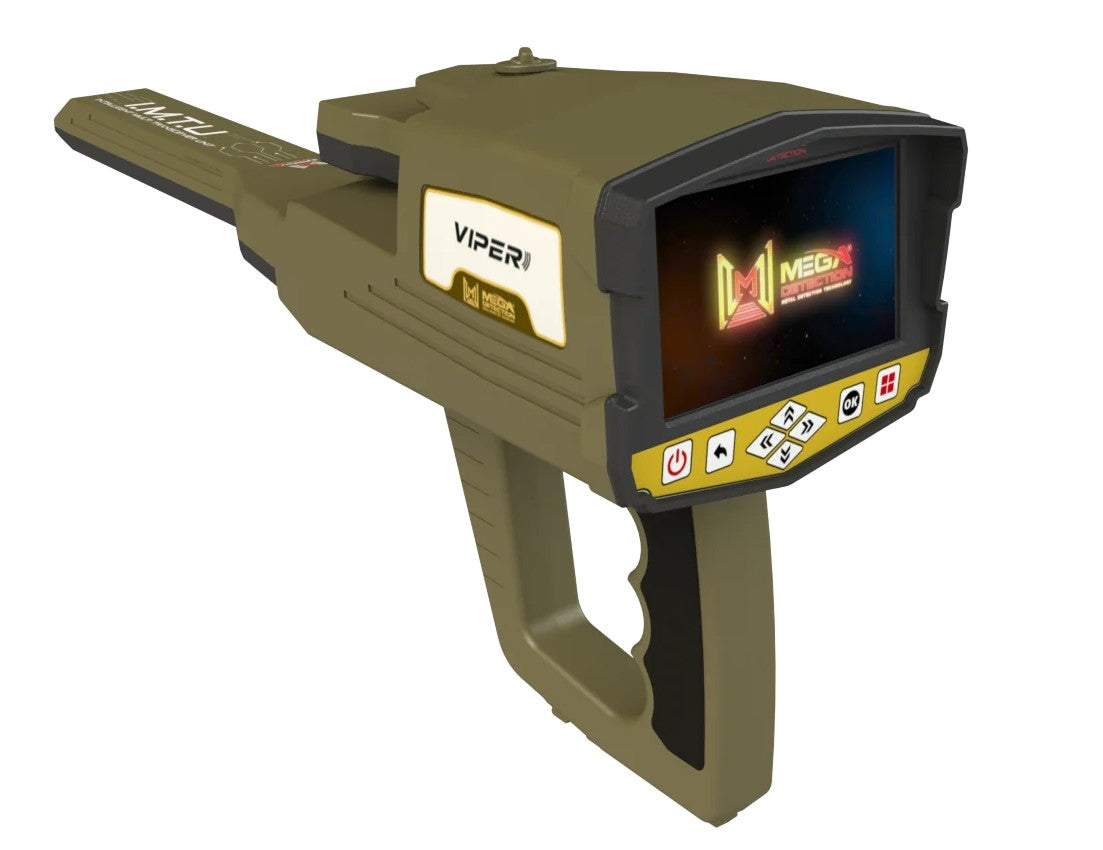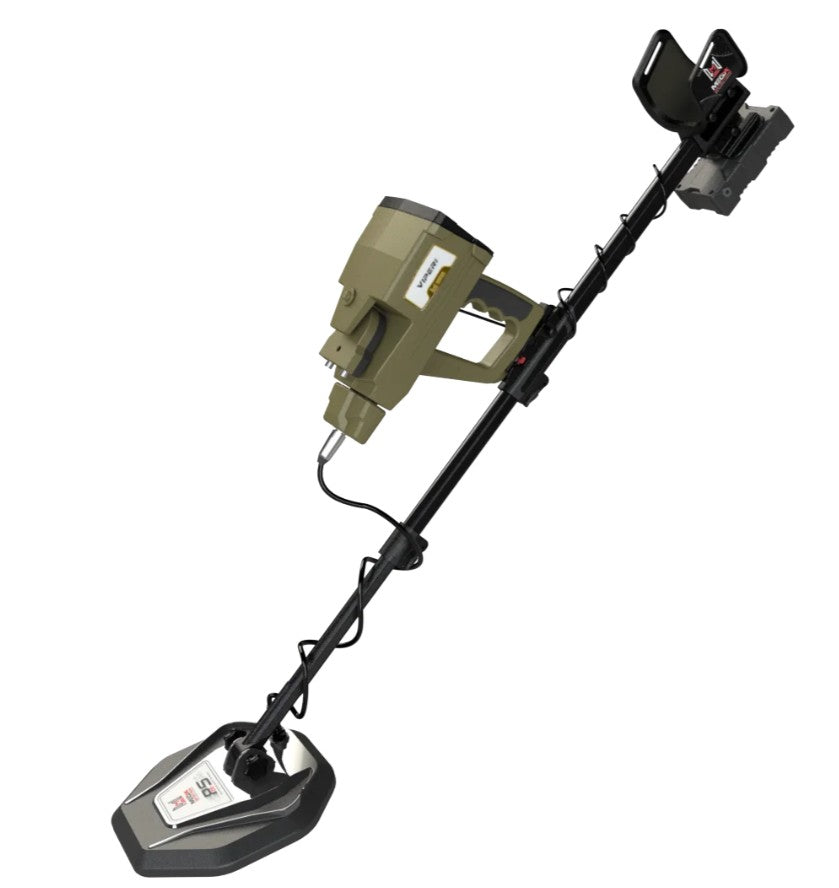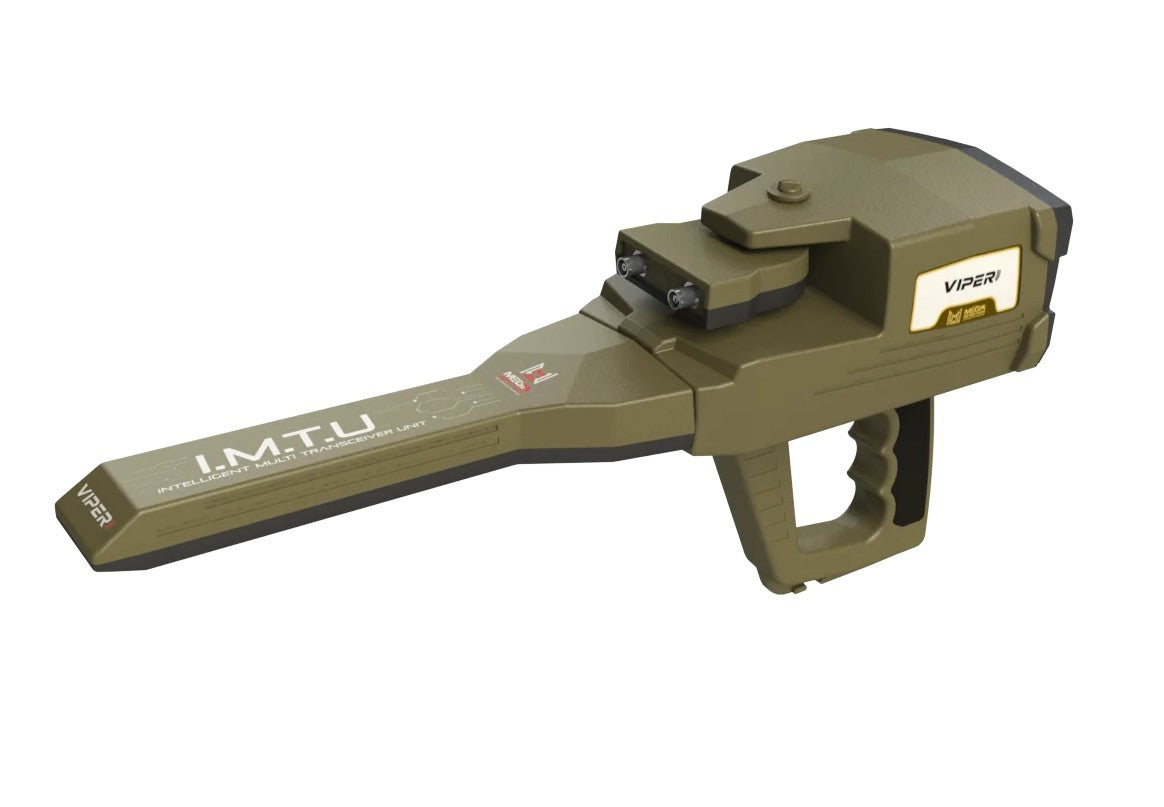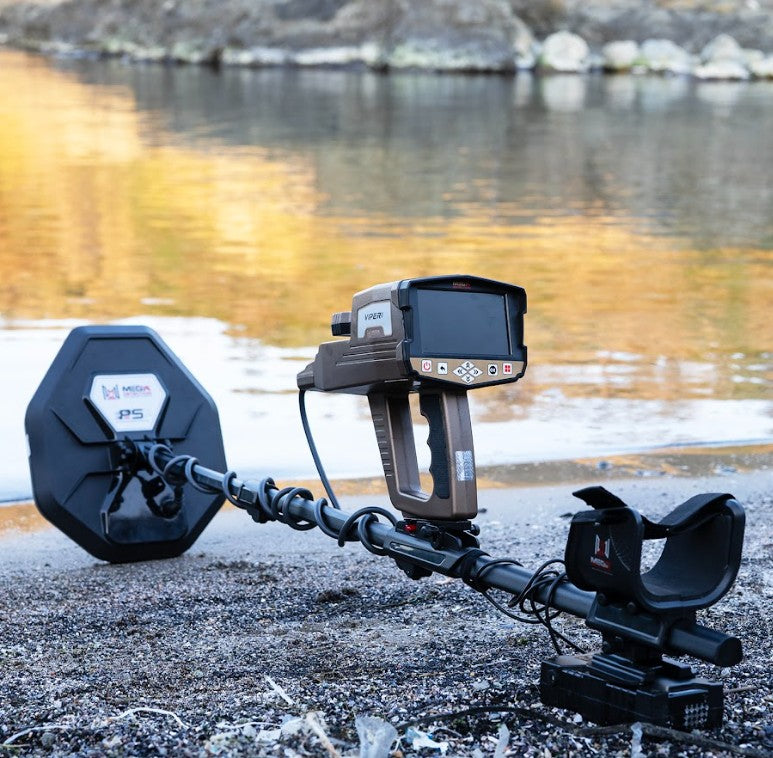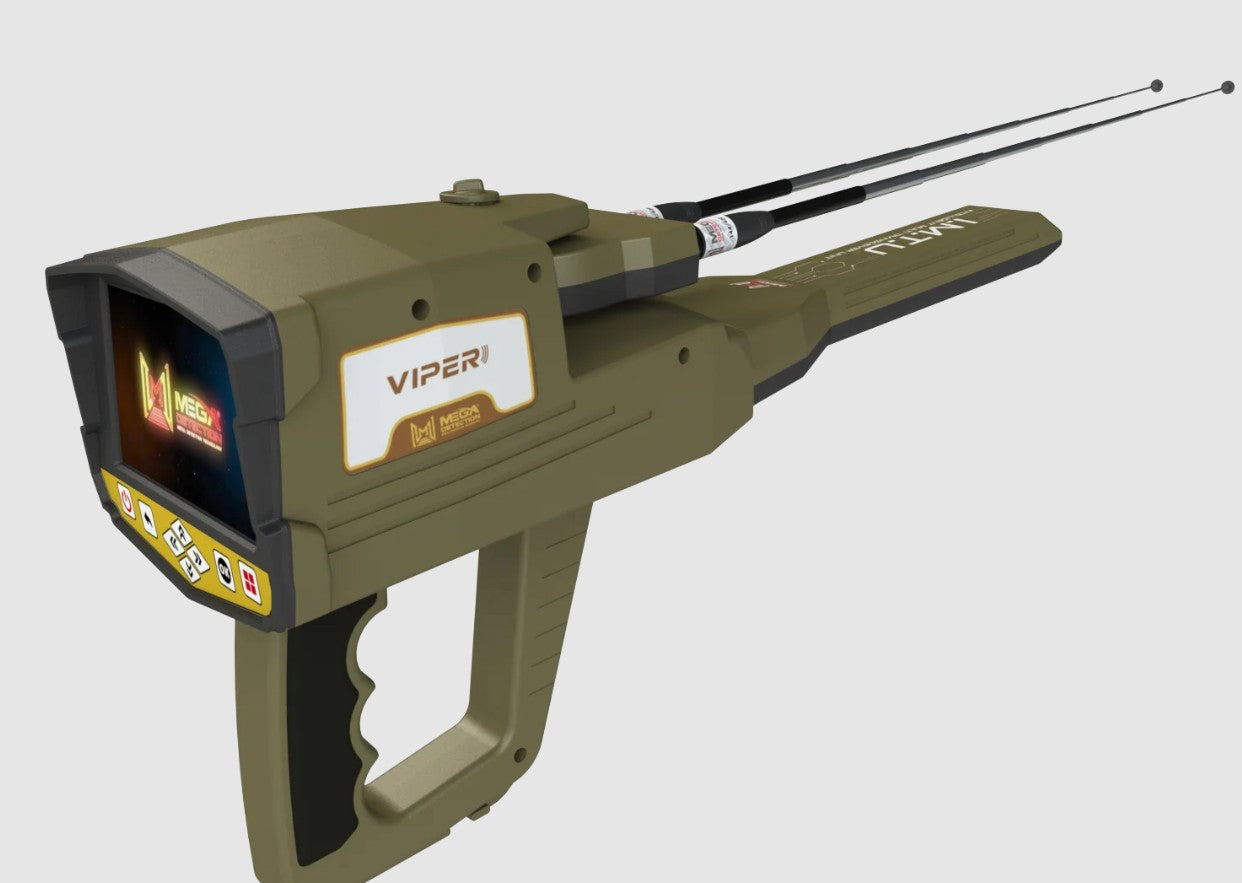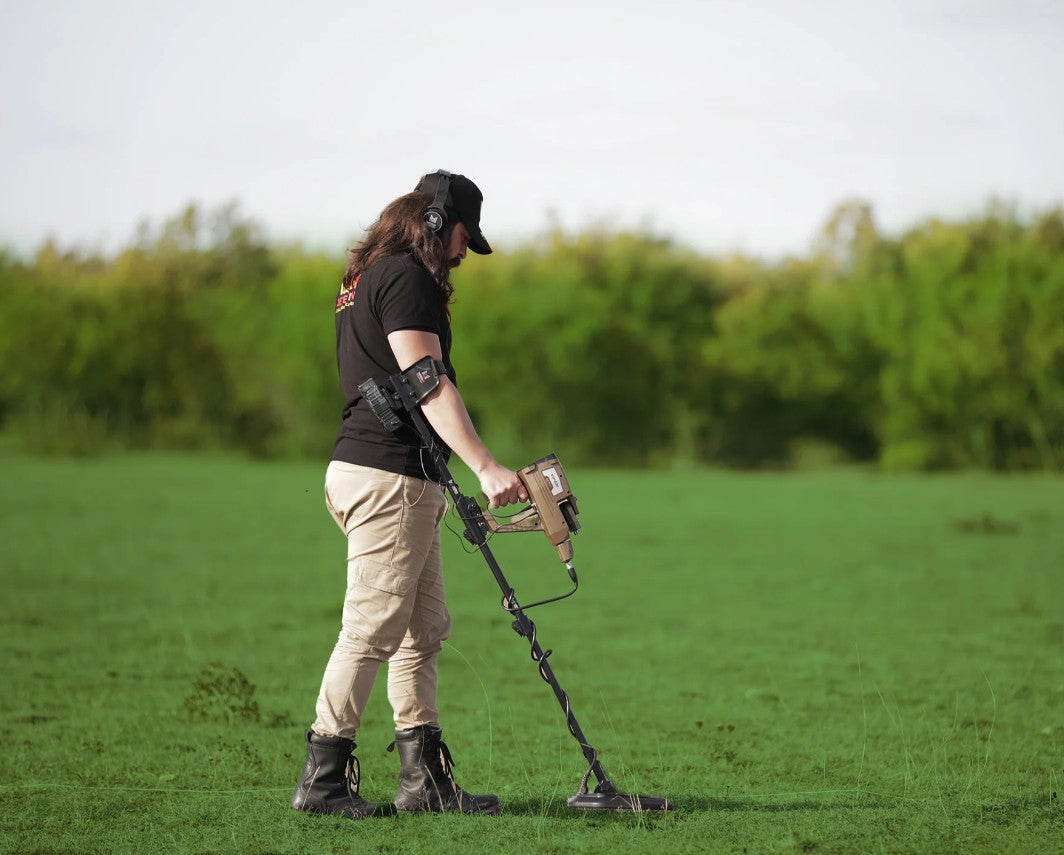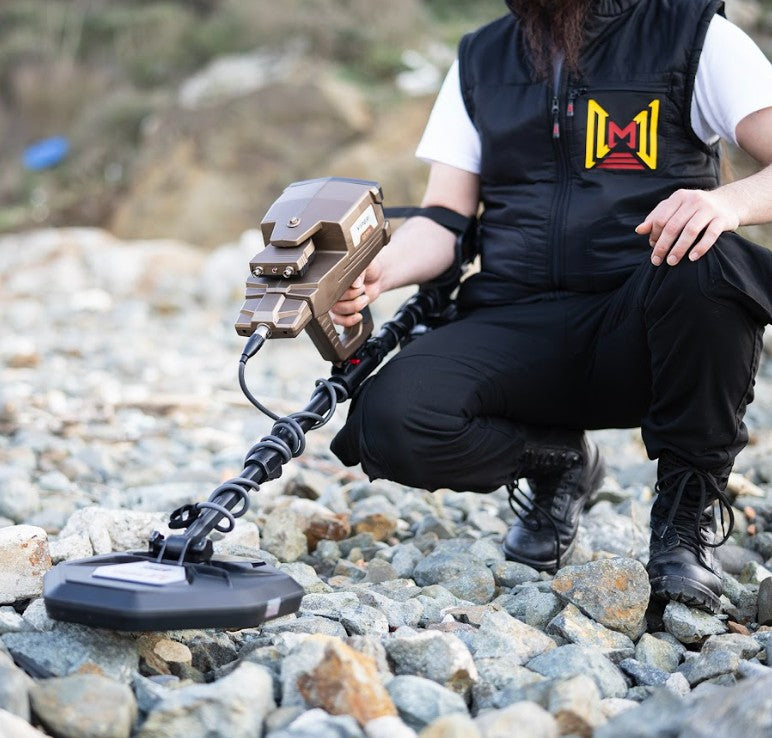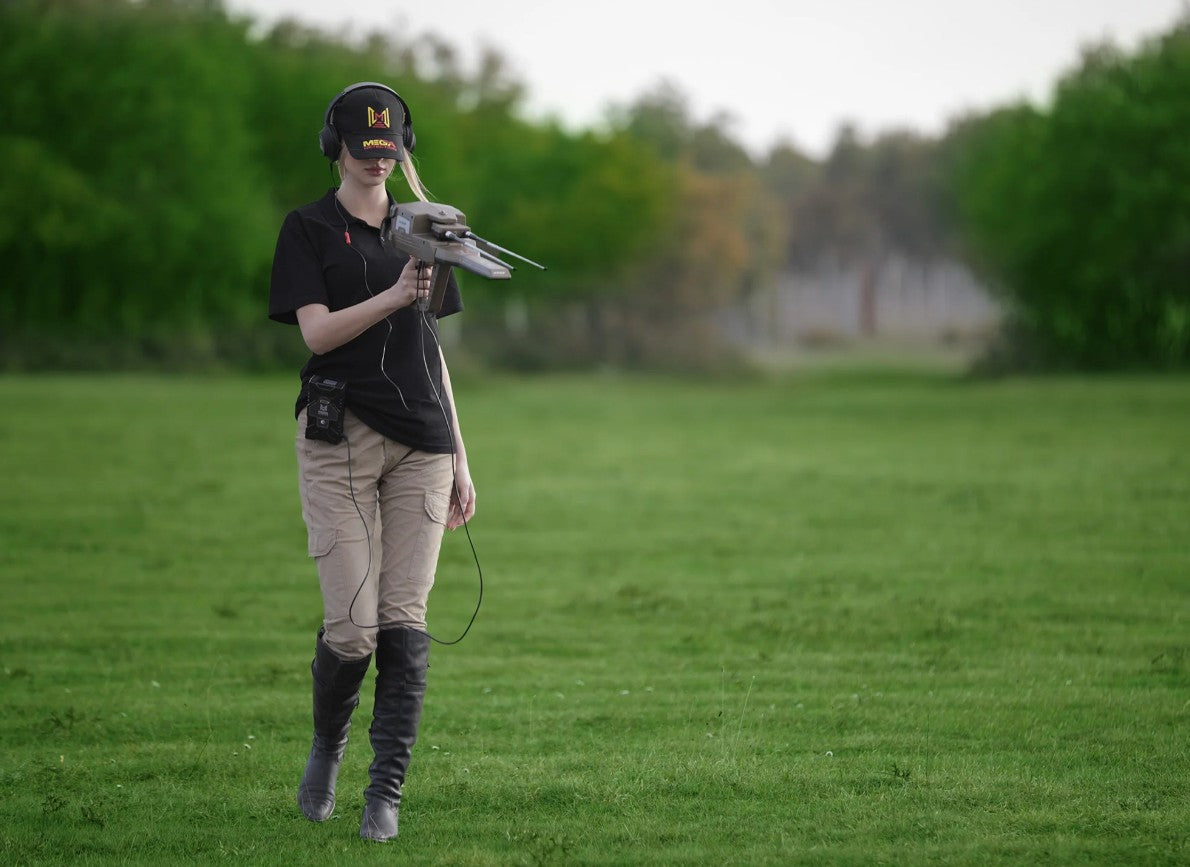AUTO LRL search system uses a special probe called the Intelligent Multi Transceiver Unit or I.M.T.U, to search for the signals of potential targets within the long-range scanning field and the reflected signals are received through a pair of antennas.
It is an advanced search system that covers large regions of the search area and this system has the ability to automatically identify all types of buried metals within a scanning area of up to 3000 m and depths up to 100 m, and display the results in the form of values that indicate the percentage of detected targets in the surround of the prospector.
Here is a list of settings that can be adjusted by the user:
Distance
It is the distance in front-range or direction of search and can be set in 0 – 3000 m range.
Depth
It is the maximum depth of possible targets that the device can reach to find potential targets, its value can be set in 0 – 100 m range.

After selecting of previous settings the user can start the search process , and during search the antennas will move left or right depending on possible nearby targets , a visual indicator on screen will guide the user as it display a left or right progress bar with gradient colors from green (minimum) to red(maximum value) depending on progress bar value.

The user must track the movement of antennas tell he got a best signals and after finishing he can move to next screen “Report” screen that will display a visual report about possible target as four horizontal bars (gold – silver – iron – diamond) , every bar will display an estimated percentage value that indicate probability of target composition.

2 – Control Long-Range Locator [CTRL LRL]
The frequency control system is one of the new technologies and important features that have been incorporated into Infinity Max Pro, which enables the user to choose the exact value of the search frequency in order to search for any type of targets that the prospector tries to reach and find, thus ensuring more accurate results.
When searching using this system, the user can also set various other values and settings related to the search, which are search frequency, soil type and front distance as it is detailed below:
- Soil Type
It is the type of soil and can be set depending on the ground that the prospectors search in it, and can be set to one of following types:
Rock – Neutral – Mixed – Metallic – Clay – Sandy – Mineral – Chalky –Salty

Frequency
User can set the custom search frequency value manually using this option.
The values range is between 100 and 5000 MHz

Distance
It is the maximum distance between user location and the target position during the searching process. It means that user can search custom circular distance around himself and this distance start from 0 to 3000 m.

Depth
It is maximum depth of possible targets that the device can reach to find potential targets, its value can be set in 0 – 50 m range.

After adjusting all of previous settings the user moves to scan screen and press “start scan” button to begin the search process.
The results screen will display a circular indicator, the direction arrow reflects the direction of antennas in degrees, beneath it the signal graph and on the right the inclination bar (alignment tool) that explained previously.
A small digital compass displayed in top-left corner of screen that point to north.
3 – Control Long Range System [Custom Frequency] / CTRL LRL /
This system provides an unprecedented feature in long-range metal detectors as it enables the user to control the frequency of searching for different metals, i.e. allocating the frequency value accurately to detect a specific type of metal, for example gold – copper or any other metal alloys. The user can adjust a set of related settings before performing the search process, namely:
- Soil Type
Soil type refers to the nature of the soil in the land being searched, and predetermined soil types can be chosen: Rocky soil – sandy soil – clay soil – moist soil …etc.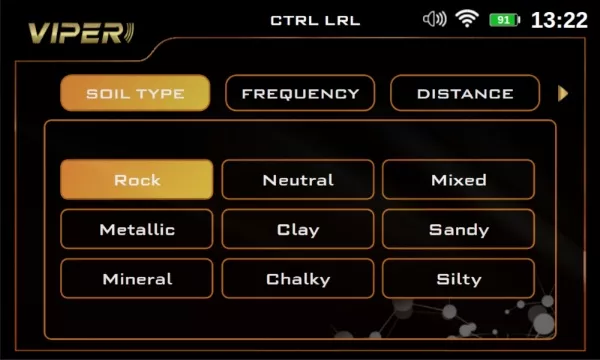
- Search frequency
It is the value that represents the search frequency that the user can set manually with this option, the values span in specific range, and can be set from preset values such as 250 – 500 – 750…. 5000 MHz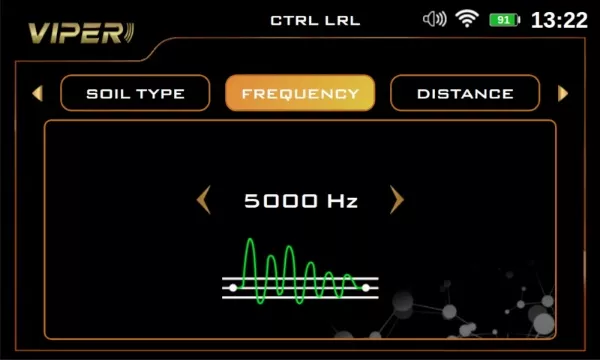
- Distance
In addition to the frequency, the scan distance can be set in the forward direction by choosing a value from predefined values within the range 0 to 3000 meters (250 – 500 – 750 – 1000 – 1250 – 1500 – 1750 – 2000 – 2250 – 2500 – 2750 – 3000 m)
- Depth
To limit the search for targets within a specific search depth, the value is set here by choosing a value within the range between 0 to 50 meters
After setting the previous settings, the user can start searching and the device will move to the target tracking screen, which includes the semicircular indicator that represents the direction of movement of the antennas (explained earlier).
4 – Ionic system / IONIC /
The Ionic System includes a completely new search technology to search for signals from ionic fields resulting from long-buried metal targets thanks to the previously mentioned IMTU.
This unit ensures receiving ionic field signals with greater accuracy, with the ability to control some signal settings to reach accurate results, and after capturing the signals, they are digitally processed inside the device.
After starting the search by the user, the following information is displayed on the screen:
- Signal strength indicator
This indicator is a bar graph with a gradient bar that varies in terms of length and color according to the strength of the captured signal related to the target distance, the nature of the terrain, and other factors.
- Signal Sensitivity Indicator
It is a circular indicator that displays the signal sensitivity as a percentage value, for example 60%, and this value can be changed by the user.
- Signal Gain Indicator
It is a circular indicator similar to the previous one that represents the signal strength according to a value represented as a percentage between 0 – 100% and can also be adjusted.
5 – Bionic System / BIONIC /
This search system is very similar to the Ionic Search System as it uses the same I.M.T.U for conducting searches and work in similar way. But the difference here is that the search is directed according to predefined signals that are captured by directing the I.M.T.U towards a target made of a metal, for example gold or silver, and in this case the search unit will only capture similar signals and ignore other ion field signals.
In other words: in the ionic search system, the search is random and free to search for any kind of targets. In the bionic system, the search is directed according to predefined signals, and this is better and faster for the prospector.
Likewise, the search screen displays the same previous options:
- Signal Strength indicator
- Sensitivity Indicator
- Gain Indicator
It has the same functions that were explained in the ionic system.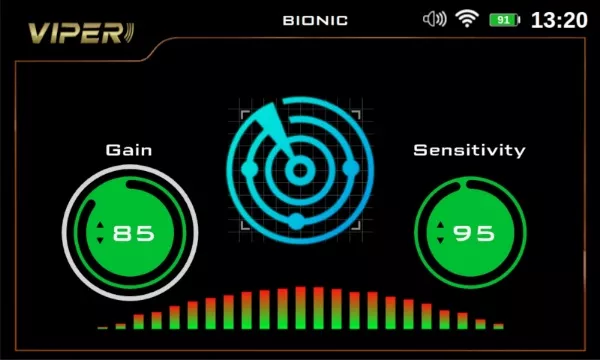
6 – Smart Detect System / SMART DETECT/
Smart Detect system is an acoustic detection system via search coils (PS36 and PS28) with two detection modes corresponding to each coil, which provide high sensitivity to detect small metal targets such as small gold nuggets and coins at small depths.
The smart detection system has been developed with a unique detection technology in terms of features and discrimination between metals that guarantees the best performance in all types of terrain and soils with ease of switching to the appropriate mode for the size of the targets and the purpose of the search.
When performing a search using the smart detection system, there are two sub modes that correspond to each search coil:
1 – Mode1 / PS36
To use this mode, the PS36 search coil [oval-shaped coil with a diameter of 36 cm] is installed to detect metal targets, the device displays a screen that includes indicators and buttons through which the detection settings and options can be set as follows:
- Calibration
By selecting this option, the user can perform a coil calibration before starting the search, to get more accurate results.
- Detection mode
The detection mode is selected by activating one of the three buttons corresponding to the detection mode:
1 – All Metal
It is a general detection mode, by activating it the device can receive signals from targets made of ferrous and non-ferrous metals.
2 – Non-Ferrous
By activating this detection mode, the device filters the signals to receive only the signals of non-ferrous metal targets such as gold, silver and copper, which means that the device ignores the signals of targets made of ferrous materials.
3 – Ferrous
This detection mode is opposite to the previous mode, where the device receives signals from ferrous targets only, such as iron, and ignores the signals of other metals.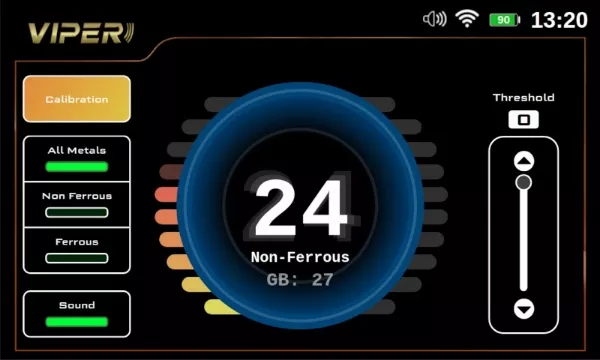
- Sound
The sound that comes out through the internal speaker of the device is enabled by activating this option or not, and muting the sound is useful for the prospector in the event that he wants to know the type of target through the digital indicator on screen without hearing the sound, as is the case in places where there is noise or audio interference due to the terrain or soil type.
- Digital Target ID Indicator
It is a circular digital graphic indicator that displays in the center of the circle a number called the digital target identifier (or Target ID) corresponding to a specific type of metal such as gold, meaning there is a certain number that corresponds to the detection of a target of gold and so on.
On both sides of the circle there are two symmetrical semicircular indicators consisting of bars that are gradually colored from bottom to top according to the target signal strength and according to the preset detection mode.
In the case of all metal detection mode, the left semicircular indicator is activated only if the target is non-ferrous (like gold) and gradient with gradient colors from yellow to red, but in the case of a ferrous target, only the right indicator is activated and the color gradient is from green to blue.
In the case of non-ferrous metal detection mode, the two indicators are activated together with gradient colors from yellow to red (the number of enabled bars and their color depends on the strength of the captured signal).
In the case of ferrous metal detection, the two indicators are activated in gradual colors from green to blue, according to the signal strength.
- Acoustic Threshold
This option can control the audio threshold of the received signals, and the user can set it using a vertical indicator with values from 1 to 6, a higher threshold value corresponds to hearing weaker signals e.g. those coming from very small gold nuggets.
1 – Mode2 / PS28
To use this mode, the PS28 search coil [28 cm diameter search coil] is installed to detect smaller metal targets. Two vertical indicators on the two sides of the screen and a graphical and digital indicators in the middle are displayed on the system results screen.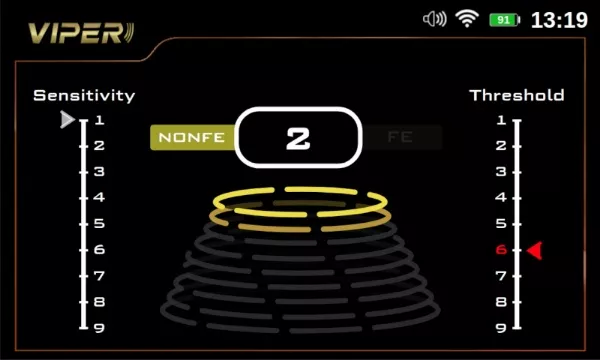
The following explains these indicators:
- Sensitivity
The indicator on the left of the screen determines the sensitivity level, and the user can set it to one of 9 levels. The higher the sensitivity value, the greater the sensitivity of the dial to detect smaller targets and vice versa.
- Threshold
It is a vertical indicator on the right side and determines the value of the audio threshold. The user can set it to one of 9 values. The higher the value, the greater the probability of hearing the signals of smaller targets, smaller values correspond to hearing the sound of larger targets.
- Graphical Signal Indicator
Indicator displayed in the middle of the screen, displays the Target ID number above and FE/NONFE indicators that are activated based on the type of metal detected (ferrous or non-ferrous), as well as a visual representation of the signal that displays a set of circles with increasing diameters from top to bottom that lights up depending on the signal strength of the target over which the coil passes.
Visual & Acoustic Feedback
The device provides the user with an integrated system to display the results resulting from the various search systems included within the device, this integrated system provides adequate and comprehensive information for the prospector to help him control the search process and know the nature of the buried targets through:
High Resolution LCD Display
The main unit of the device includes a high-definition LCD color screen with a large size that secures a better view when adjusting various settings such as choosing the search system and ground scan settings and provides reading numbers and charts that clearly represent the results.
The color screen of the device provides a visual display of the results within the device program with useful information for the prospector, including the direction of the search and a report on the type of metal, for example in LRL systems, two-dimensional representation of the scan area and its contents in imaging systems, and a digital visual representation in pulse induction systems.
Built-in Speaker
All search systems available in the device provide audio feedback through audio tones that direct the user and give him an idea of the progress of the search process or give him an idea of the nature of the targets as in the systems of pulse induction and smart detection.
Example: In the Live Stream system, the device provide audio tones related to the type of target metal, and the sound intensity varies according to distance from the target.
Easy To Use Multilingual Software Program
The device program is designed according to the latest standards of graphical user interface design and user experience with a modern, attractive and practical design that combines clear texts, expressive icons, harmonious colors, as well as animation.
The program provides an easy experience of use for beginners and professionals alike, where they can set various settings related to the search, such as search systems, search programs, depth field, and front distance in LRL systems, and detection modes in Smart Detect systems.
The program also provides a visual presentation of the search results for all search systems and their various options in a graphical form, charts and indicators, accompanied by the various sounds that are associated with choosing a specific button or navigating between settings and others.
One of the important features of the device program to provide access to the largest segment of prospectors around the world is its availability in 12 international languages representing the most widely spoken languages in the world (English – French – Chinese…).
External Battery
The power is supplied to the device via a 12-volt lithium-ion-polymer battery, which is rechargeable and designed with a special design in the form of an external box with an on and off button.
The battery guarantees a long time of use, and the operating time is related to several factors, including the search system, the search tools used, and the power saving settings available in the device software.

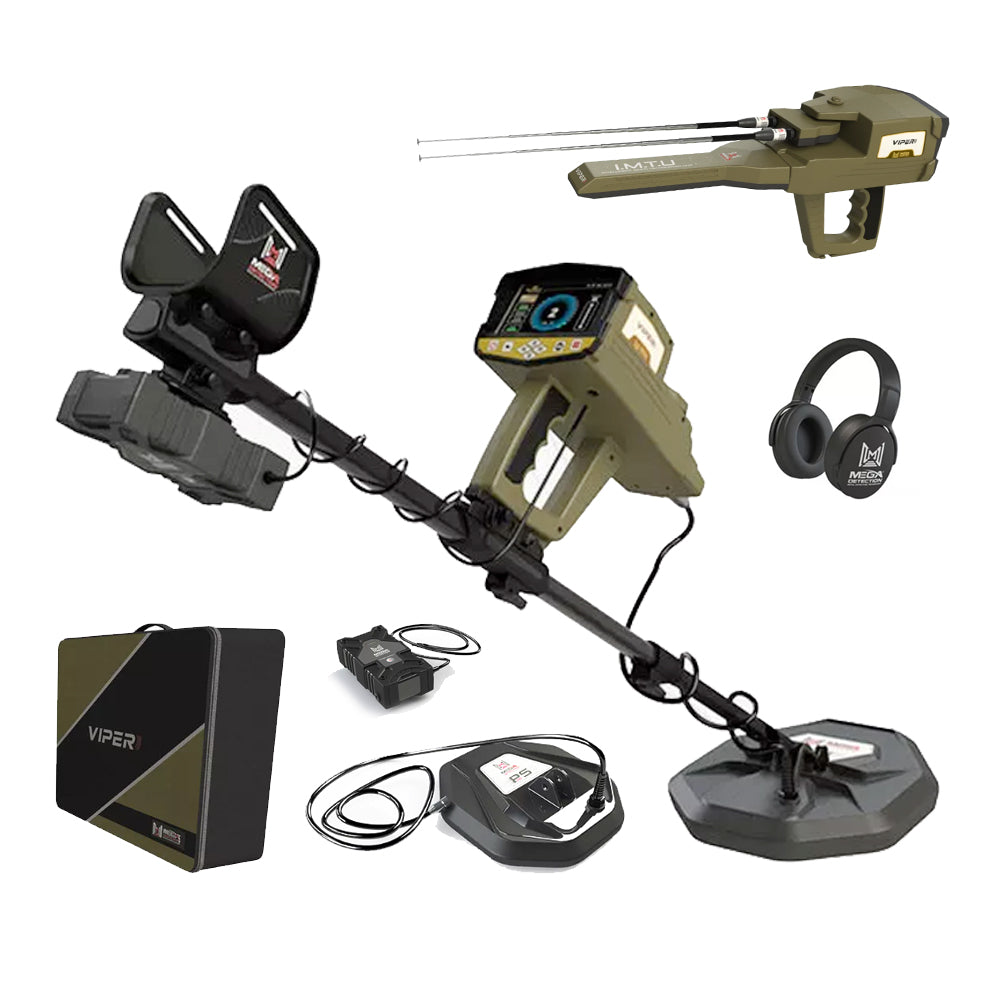
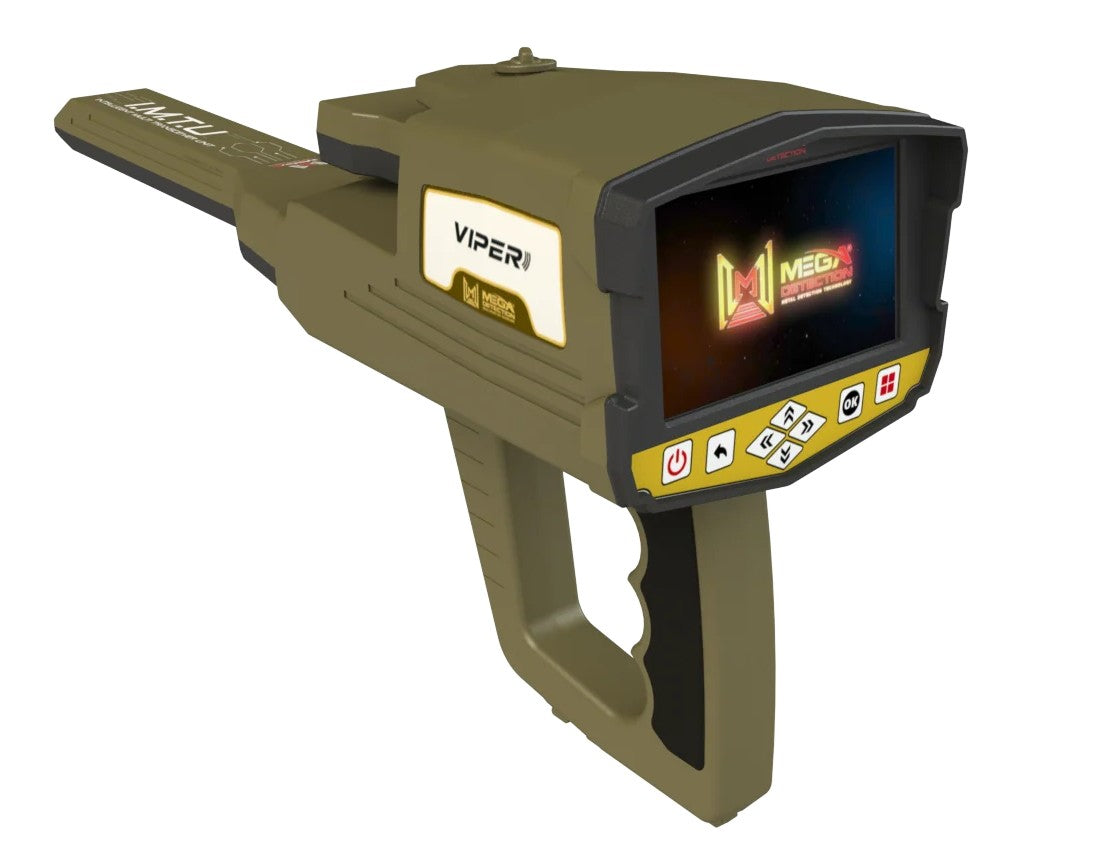
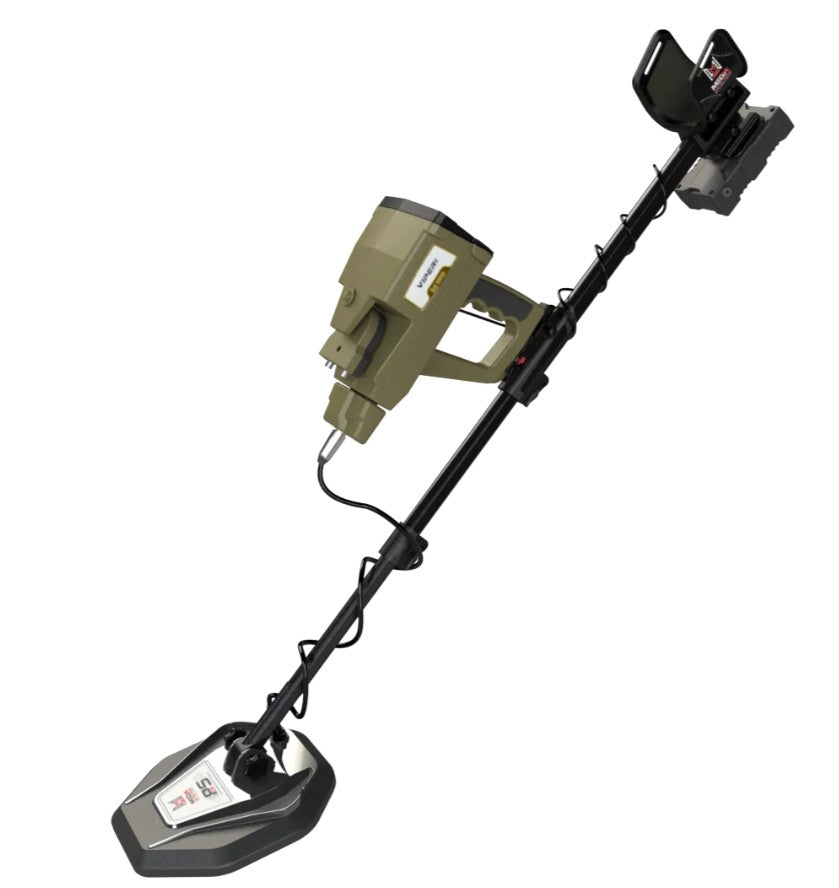
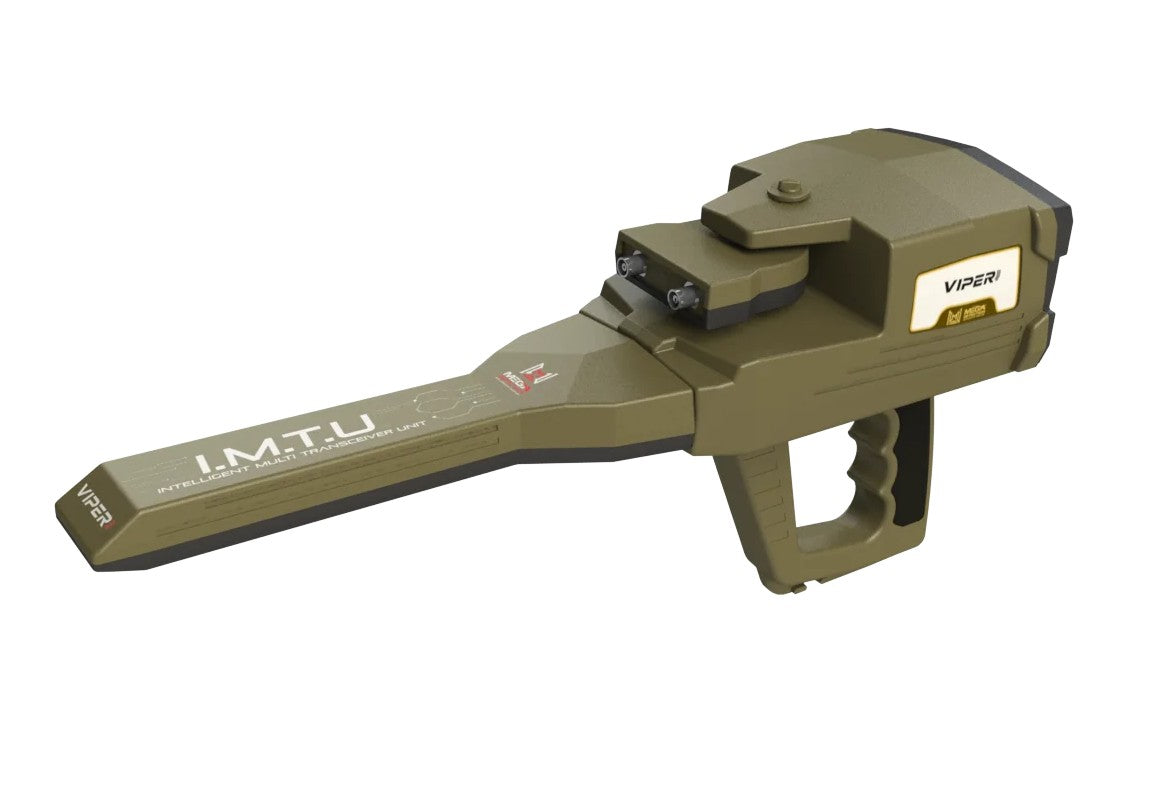
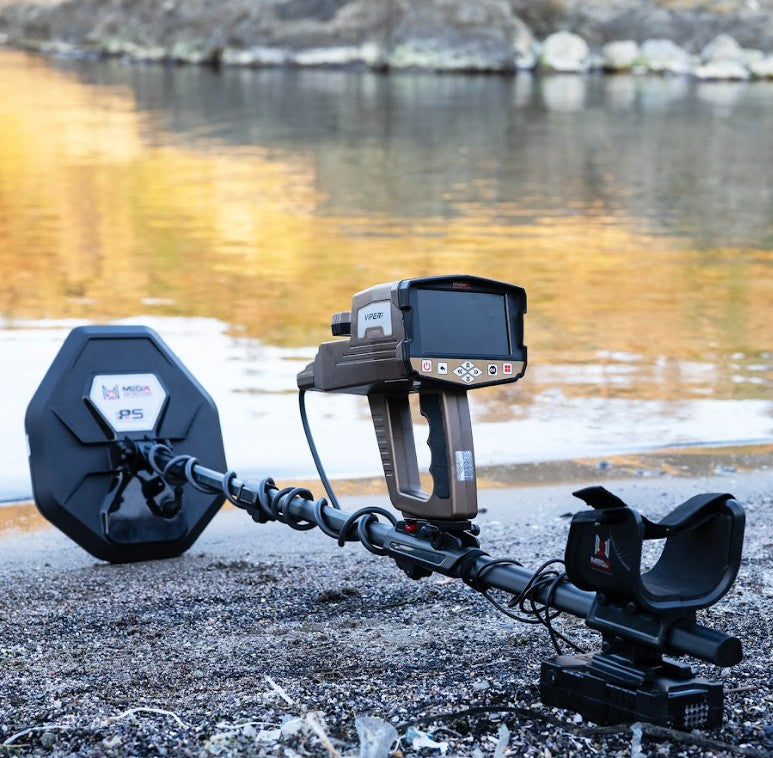
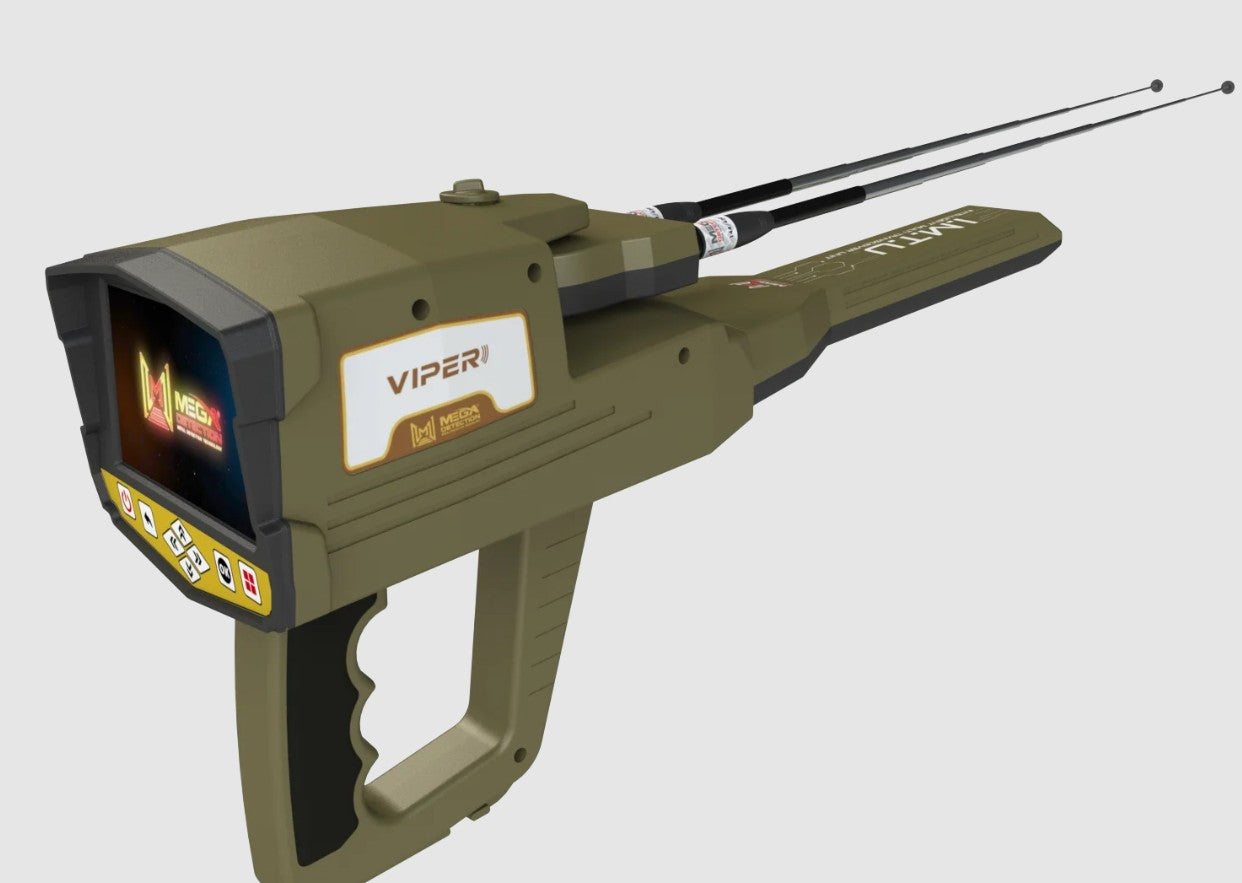

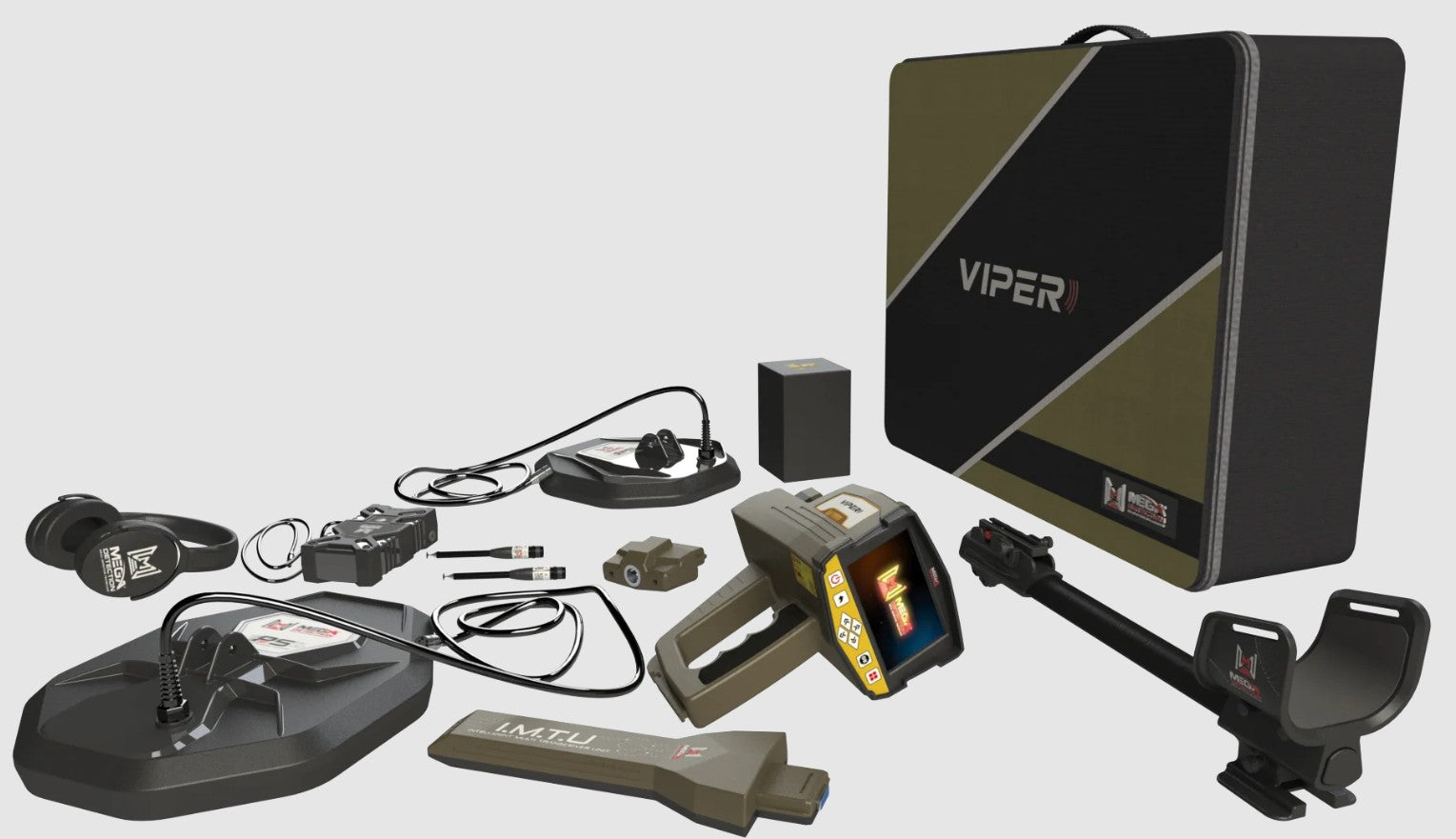
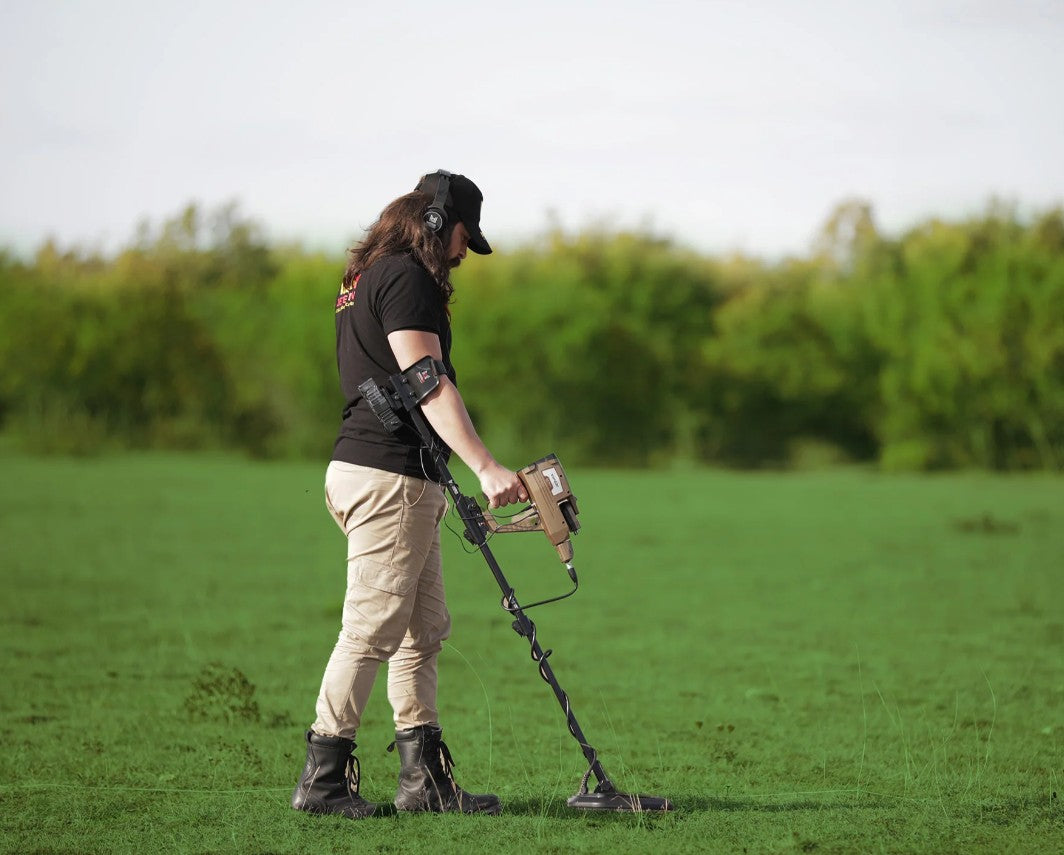
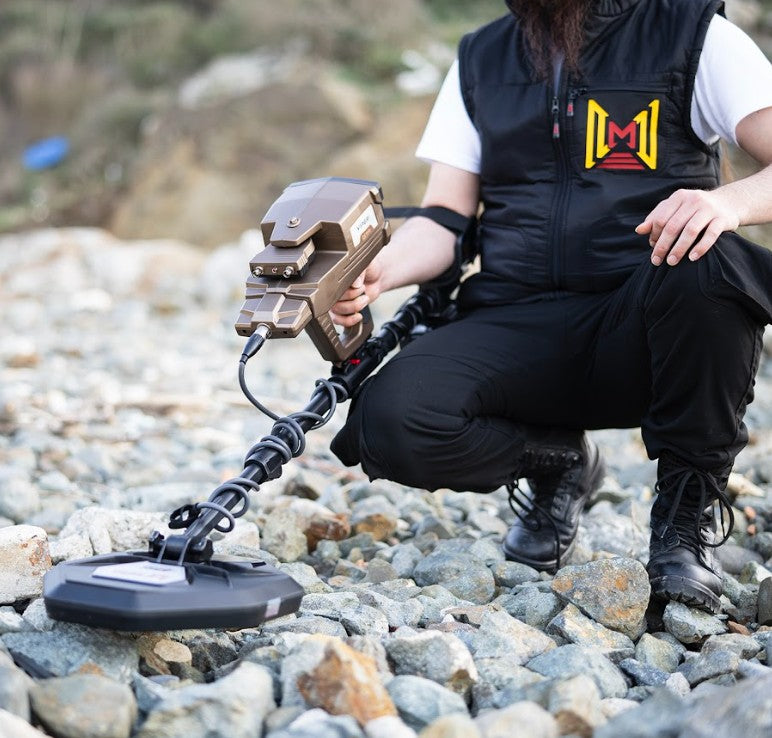
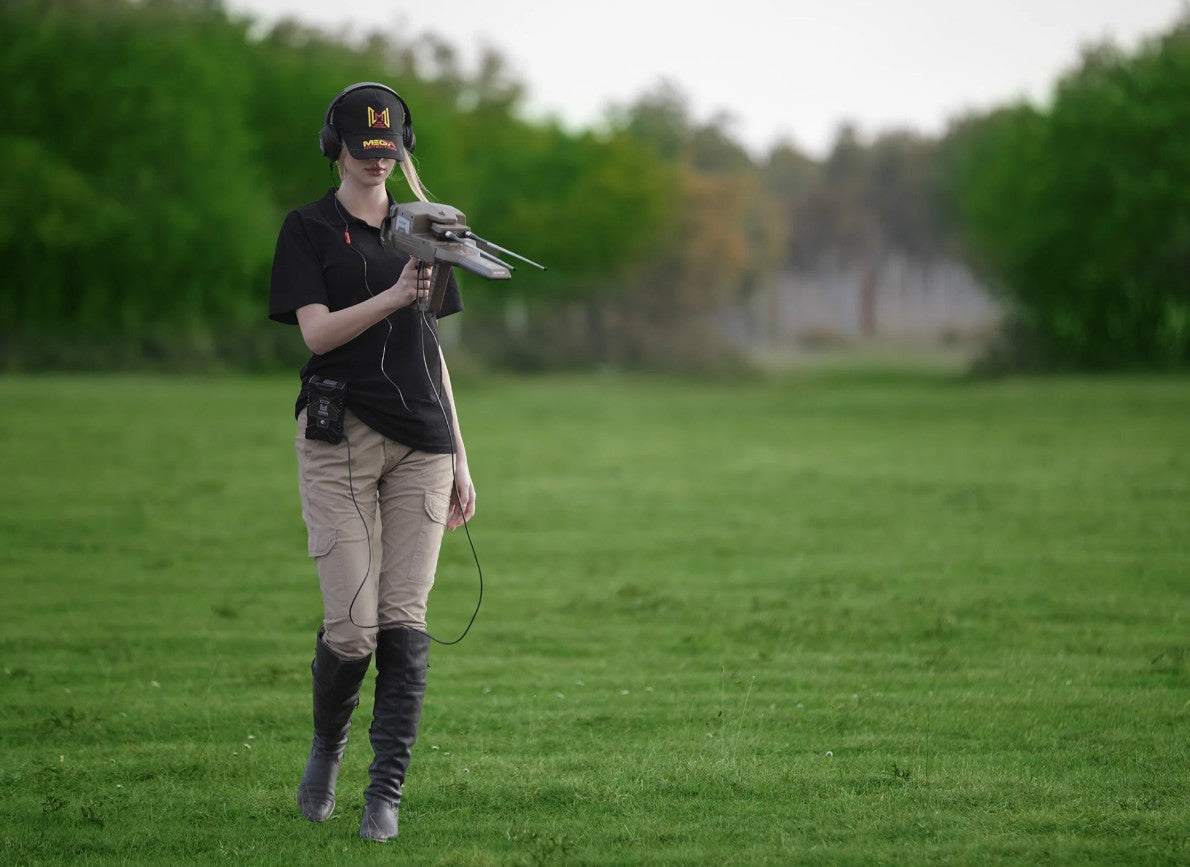


 PRODUCT DESCRIPTION
PRODUCT DESCRIPTION
